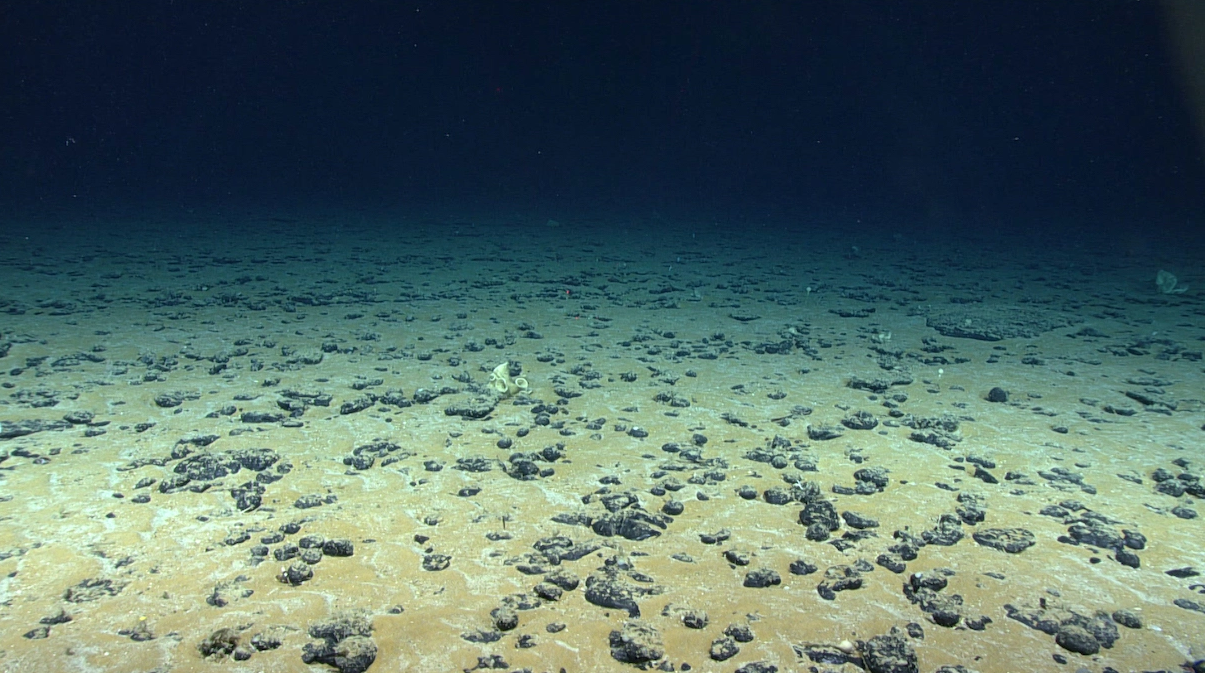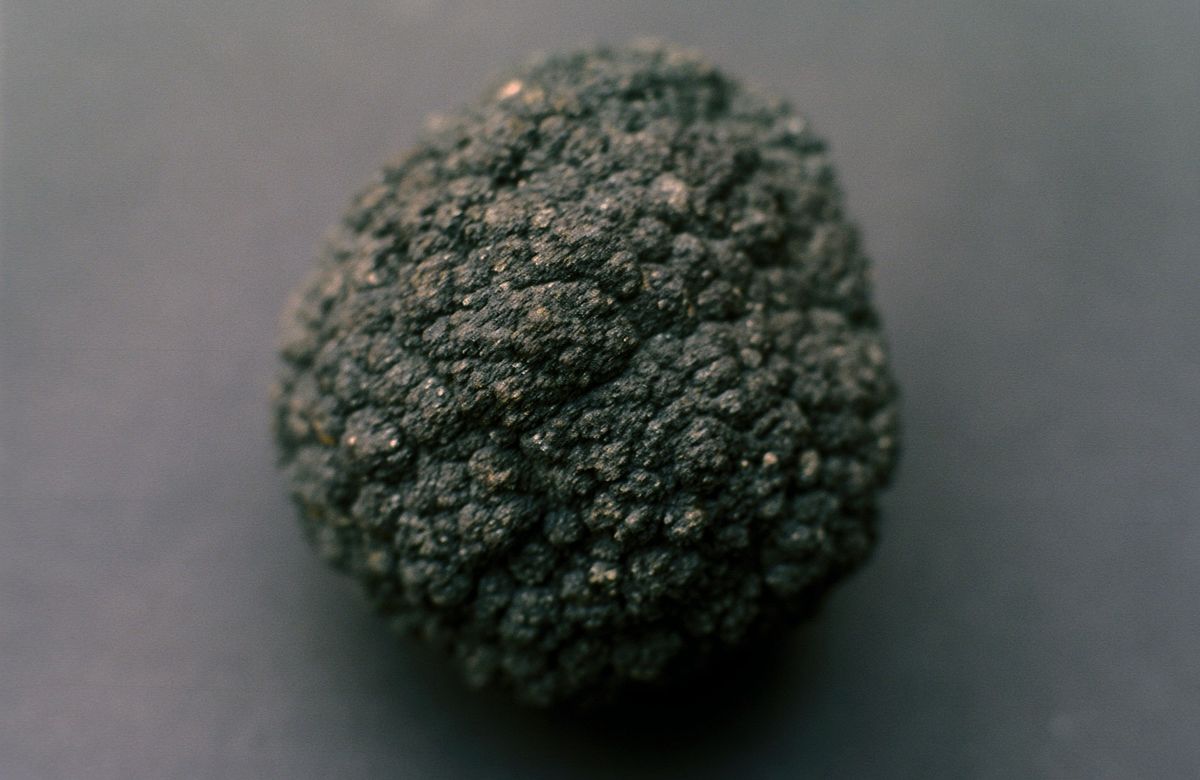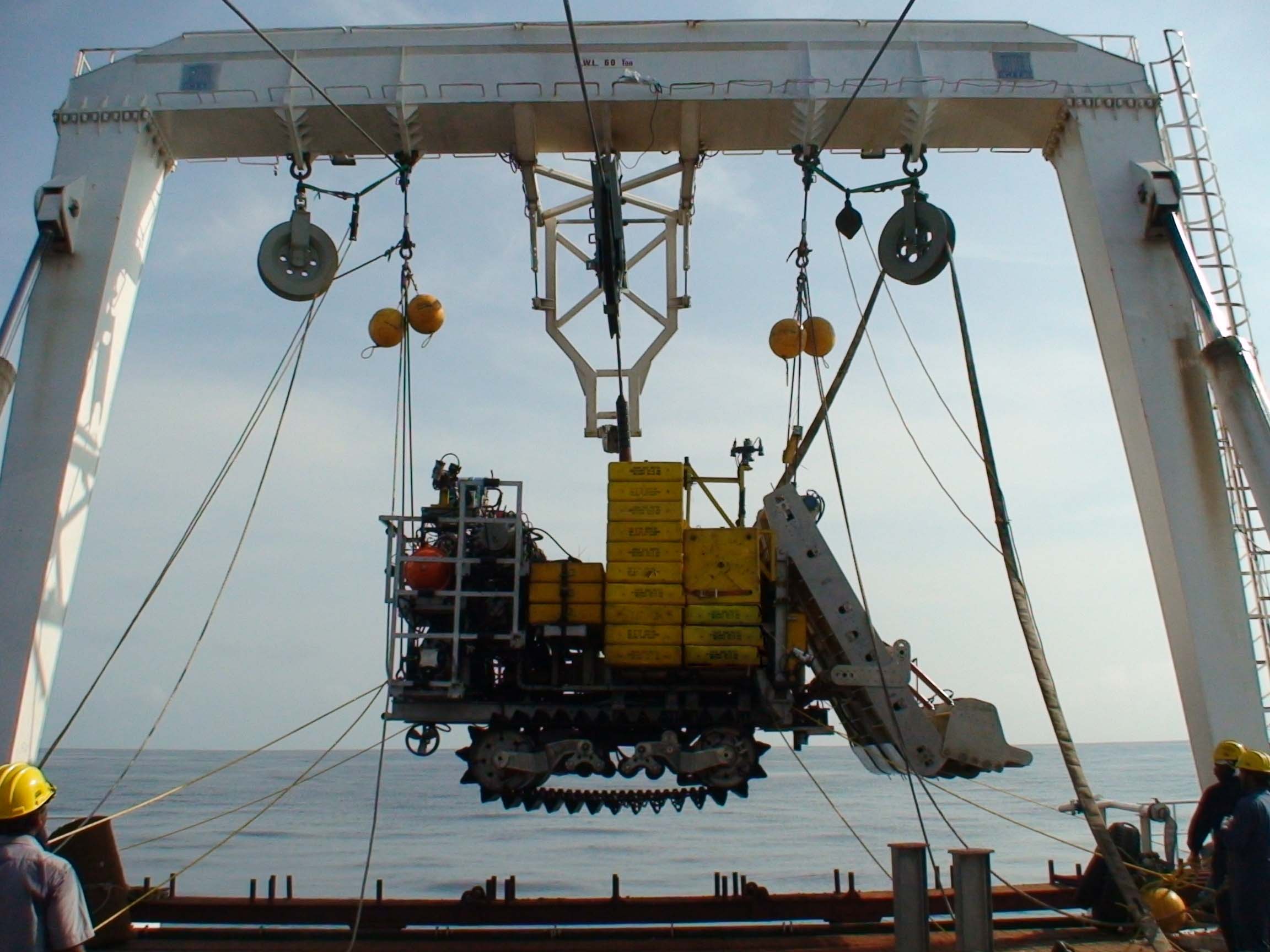Andrew Thaler for the Deep-sea Mining Observer
This April, India’s National Institute of Ocean Technology completed a landmark research cruise to test new deep-sea mining equipment, survey potential ore prospects, and attempt the deepest seabed crawler test yet conducted. This unprecedented endeavor was completed in the midst of a deadly wave of coronavirus infections spurred on by the newly emergent Delta variant which overwhelmed the global pandemic response and reversed a year of progress.
The research crew boarded the ORV Sagar Nidhi several days ahead of departure in order to establish a COVID-free bubble before departing from Chennai Port on a 3,000 kilometer journey to the test site. It would take more than two weeks to reach the site where a new deep-sea crawler would be deployed to depths greater than 5 kilometers, the deepest known test of a seabed locomotion system. No major failures were reported during the successful sea trials.
The entire trial was streamed live to NIOT and the Indian Ministry of Earth Sciences.
Emerging Blue Economy industries will play a central role in India’s expanding economy. This research campaign is one component of India’s Deep Ocean Mission, a roughly $500 million USD investment to dramatically expand the country’s capacity to explore and exploit the deep sea over the next 5 years. In addition to the seabed crawler, which will ultimately evolve into a nodule collecting system capable of operating on the deep abyssal plain in both India’s national waters and in areas beyond national jurisdiction, India is investing in the development of the Samudrayaan human-occupied submersible, which will be only the third submersible capable of operating at depths greater than 6,000 meters, with an endurance of several days.
The Deep Ocean Mission also includes funding to develop ocean climate change advisory services, establish a center of excellence for marine science to develop human capacity in science and engineering, and promote technological innovations for deep ocean conservation and exploration.
India has several deep-sea mining claims, in both areas beyond national jurisdiction and within their national waters. These include polymetallic nodule fields in the Indian Ocean both beyond and within national borders, as well as seafloor massive sulphide deposits on the Central Indian Ridge.
Of the world’s oceans, the Indian Ocean remains the most understudied. In a paper published in 2019, Dr. Diva Amon and myself examined historical reports from research conducted at deep-sea hydrothermal vents around the world, and determined that the greatest potential for new scientific discoveries lies in the Indian Ocean. Though this research was centered specifically on seafloor massive sulphides, the trend holds for other deep-sea ecosystems. India’s financial commitment to The Deep Ocean Mission and to increasing the capacity for research, exploration, and exploitation could place them in a position to deliver new insights into the deep ocean in line with the furious pace of discovery that occurred in the 1980s, 1990s, and early 2000s.
This month, China also completed a 1,300 meter test of their Pioneer I seafloor crawler.
We reached out to NIOT representatives for comment and will update if we receive a response.
Featured Image: Polymetallic nodules. Image by the NOAA Office of Ocean Exploration and Research.





